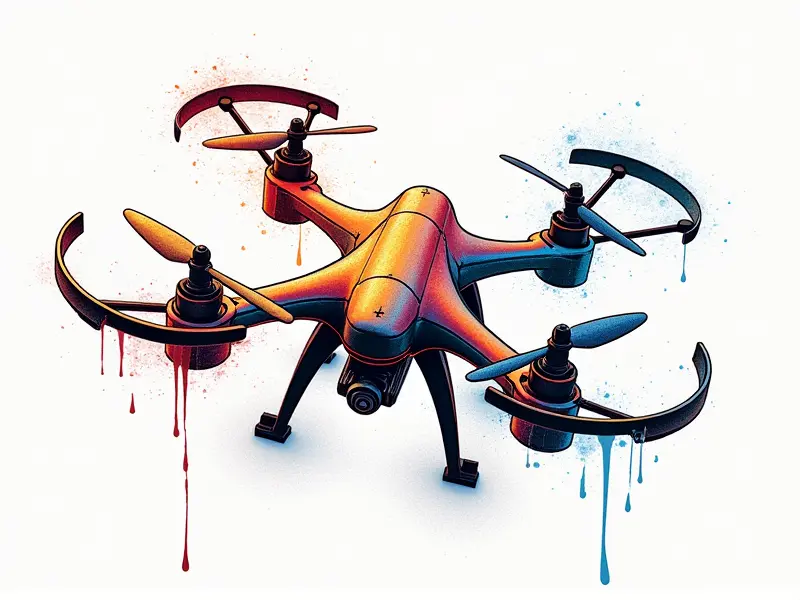Drone repair for agriculture?

Essential Drone Care for Farmers
Farmers who rely on drones for agriculture must ensure these devices are well-maintained to maximize their efficiency and longevity. Proper care includes regular cleaning, battery management, software updates, and routine inspections.
- Cleaning: Dust, dirt, and debris can interfere with drone performance. Use a soft brush or compressed air to clean the exterior and sensors regularly.
- Battery Management: Batteries degrade over time. Store batteries in a cool place and charge them fully before storage. Replace batteries when their capacity drops below 80% of original capacity.
- Software Updates: Keep the drone's firmware up-to-date to benefit from new features, bug fixes, and security patches.
Extend Your Ag Drone's Life
To extend your agricultural drone’s life, follow these tips:
- Regular Maintenance: Conduct routine checks on the propellers, motors, frame, and sensors. Tighten loose screws and replace worn-out parts.
- Proper Storage: Store drones in a dry place away from direct sunlight to prevent corrosion and damage.
- User Training: Ensure operators are trained on proper handling and maintenance procedures to minimize accidental damage.
Common Issues with Ag Drones
Agricultural drones face several common issues that can affect their performance. These include:
- Battery Problems: Weak batteries or faulty charging systems can cause unexpected shutdowns during flights.
- Sensor Malfunctions: Dirt, dust, and moisture can obstruct sensors, leading to inaccurate data collection.
- Mechanical Failures: Worn-out parts such as motors, propellers, or gears can lead to mechanical failures during operation.
DIY Repairs for Agricultural Drones
Many minor issues with agricultural drones can be fixed at home. Here are some DIY repair tips:
- Battery Replacement: Replace batteries when their capacity drops below 80% of original capacity.
- Sensor Cleaning: Clean sensors using a soft brush or compressed air to remove dirt and dust.
- Mechanical Adjustments: Tighten loose screws, replace worn-out parts such as propellers, and lubricate moving components.
Maintaining Drones for Precision Farming
Precision farming relies heavily on accurate data collected by drones. Proper maintenance ensures this data is reliable:
- Calibration: Regularly calibrate sensors to ensure they provide accurate readings.
- Data Management: Store and manage data securely to prevent loss or corruption.
- Weather Protection: Use weather-resistant covers when storing drones outdoors.
Repair Tips for Ag Drone Owners
To keep your agricultural drone in top condition, follow these repair tips:
- Keep a Repair Log: Document all repairs and maintenance performed to track the history of your drone.
- Use Quality Parts: Replace parts with high-quality components from reputable suppliers.
- Leverage Online Resources: Utilize online forums, manuals, and tutorials for troubleshooting and repair guidance.
Troubleshooting Tips for Ag Drones
Frequent issues can often be resolved through basic troubleshooting steps:
- Battery Issues: Check battery connections, replace batteries if necessary, and ensure proper charging.
- Sensor Problems: Clean sensors thoroughly and check for physical damage or obstruction.
- Motor Failures: Inspect motors for wear and tear. Replace faulty components immediately to prevent further damage.
Keeping Your Crop Drone Flying
To keep your crop drone operational, follow these best practices:
- Regular Check-ups: Schedule routine inspections to catch potential issues early.
- User Manuals and Guides: Refer to manufacturer guidelines for proper maintenance procedures.
- Professional Services: Engage with certified technicians for complex repairs or when unsure about DIY fixes.
Essential Tools for Drone Fixing
The right tools can make drone repair easier and more effective. Here are some essential tools:
- Screwdrivers: A set of Phillips and flat-head screwdrivers in various sizes.
- Lubricants: Use specialized lubricants for moving parts to ensure smooth operation.
- Cleaning Supplies: Soft brushes, compressed air cans, and cleaning solutions for sensors and components.
Affordable Ag Drone Repairs
Maintaining your agricultural drone doesn’t have to be expensive. Here are some cost-effective repair strategies:
- DIY Solutions: Address minor issues yourself using online tutorials and guides.
- Second-hand Parts: Consider purchasing used or refurbished parts from reputable suppliers.
- Maintenance Contracts: Some manufacturers offer maintenance contracts that can be more cost-effective in the long run.
Common Issues in Ag Drone Repairs
Understanding common repair challenges helps you prepare and mitigate potential problems:
- Limited Access to Parts: Ensure you have a reliable source for replacement parts.
- Tech-Savvy Operators: Train operators on basic troubleshooting skills to handle minor issues independently.
- Data Security: Maintain data integrity by backing up and securely storing collected information.
Conclusion
Maintaining agricultural drones is crucial for efficient farming operations. By following the tips outlined in this article, you can extend your drone's lifespan, minimize downtime, and ensure reliable performance. Regular maintenance, proper storage, and timely repairs are key to keeping your ag drone flying smoothly.

